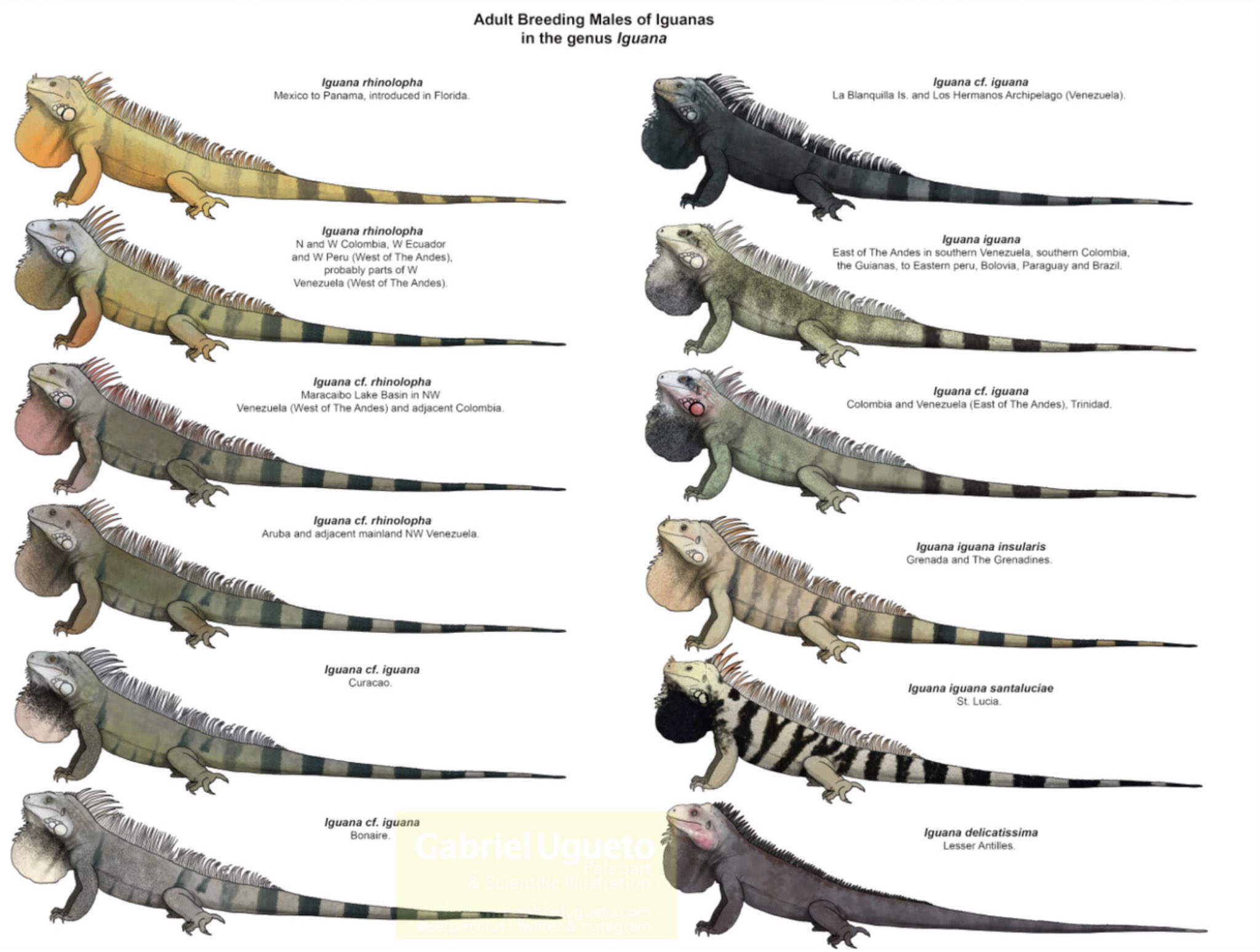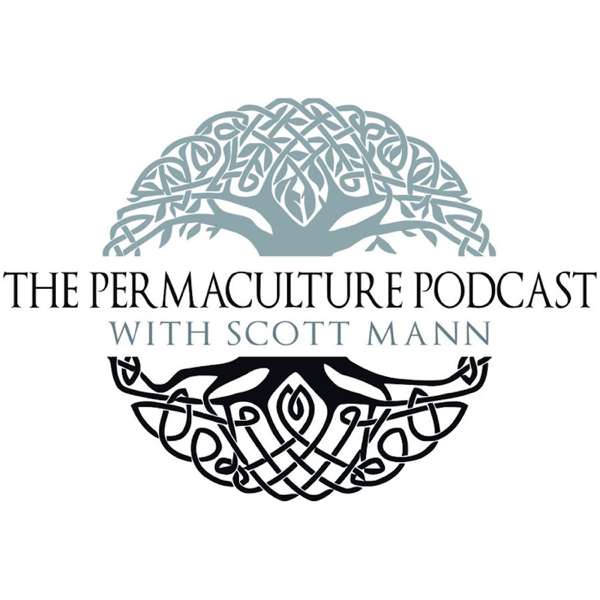The sixth episode of the SquaMates podcast—featuring some amazing new stories, including new iguanas and crocodiles, high-elevation herps, and some spectacular sea serpents! The show is hosted by Mark D. Scherz, Gabriel Ugueto, and Ethan Kocak.
In this sixth episode, we talk about the many newsworthy papers published in the last month, from complex genomic modelling to some really amazing new species, including one crocodile that is new, and one that is not! Our main discussion is about sea snakes, their diversity and specialisations. Our #HERper is Grace Olive Wiley, a controversial but amazing herper of history.
Episode notes sometimes get clipped on your device or by your podcast provider; for full (extensive) notes (and references), go to http://www.squamatespod.com
Works in Frogress:
Prötzel, D., Lambert, S.M., Andrianasolo, G.T., Hutter, C.R., Cobb, K.A., Scherz, M.D. & Glaw, F. (2018) The smallest ‘true chameleon’ from Madagascar: a new, distinctly colored species of the Calumma boettgeri complex (Squamata, Chamaeleonidae). Zoosystematics and Evolution, 94, 409–423. 10.3897/zse.94.27305
Scherz, M.D., Glaw, F., Rakotoarison, A., Wagler, M. & Vences, M. (2018) Polymorphism and synonymy of Brookesia antakarana and B. ambreensis, leaf chameleons from Montagne d’Ambre in north Madagascar. Salamandra, 54, 259–268.
Hutter, C.R., Andriampenomanana, Z.F., Razafindraibe, J., Rakotoarison, A. & Scherz, M.D. (2018) New dietary data from Compsophis and Alluaudina species (Squamata: Lamprophiidae: Pseudoxyrhophiinae), and implications for their dietary complexity and evolution. Journal of Natural History, 52, 2497–2510. 10.1080/00222933.2018.1543732
https://www.newtist.com/
Gabriel’s interview with Dave Hone
How dinosaurs are brought to life—through art (interview with Gabriel)
Breaking Newts References:
Barrow, L.N., Lemmon, A.R. & Lemmon, E.M. (2018) Targeted Sampling and Target Capture: Assessing Phylogeographic Concordance with Genome-wide Data. Systematic Biology, syy021.
Breuil, M., Vuillaume, B., Schikorski, D., Krauss, U., Morton, M., Haynes, P., Daltry, J., Corry, E., Gaymes, G., Gaymes, J., Bech, N., Jesic, M. & Grandjean, F. (2018) A story of nasal horns: A new species of Iguana Laurenti, 1768 (Squamata, Iguanidae) in Saint Lucia, St Vincent & the Grenadines, and Grenada (Southern Lesser Antilles) and its implications for the taxonomy of the genus Iguana. bioRxiv. 10.1101/466128
note: Iguana delicatissima lives in sympatry with introduced populations of Iguana… not native populations of the new Iguana.
Engelbrecht, H.M., Branch, W.R., Greenbaum, E., Alexander, G.J., Jackson, K., Burger, M., Conradie, W., Kusamba, C., Zassi-Boulou, A.-G. & Tolley, K.A. (2019) Diversifying into the branches: Species boundaries in African green and bush snakes, Philothamnus (Serpentes: Colubridae). Molecular Phylogenetics and Evolution, 130, 357–365. 10.1016/j.ympev.2018.10.023
Liu, J., Guo, X., Chen, D., Li, J., Yue, B. & Zeng, X. (2019) Diversification and historical demography of the rapid racerunner (Eremias velox) in relation to geological history and Pleistocene climatic oscillations in arid Central Asia. Molecular Phylogenetics and Evolution, 130, 244–258. 10.1016/j.ympev.2018.10.029
Milián-García, Y., Russello, M.A., Castellanos-Labarcena, J., Cichon, M., Kumar, V., Espinosa, G., Rossi, N., Mazzotti, F., Hekkala, E., Amato, G. & Janke, A. (2018) Genetic evidence supports a distinct lineage of American crocodile (Crocodylus acutus) in the Greater Antilles. PeerJ, 6, e5836. 10.7717/peerj.5836
Myers, E.A., Bryson, R.W., Hansen, R.W., Aardema, M.L., Lazcano, D. & Burbrink, F.T. (2018) Exploring Chihuahuan Desert diversification in the gray-banded kingsnake, Lampropeltis alterna (Serpentes: Colubridae). Molecular Phylogenetics and Evolution. 10.1016/j.ympev.2018.10.031
Prates, I., Penna, A., Rodrigues, M.T. & Carnaval, A.C. (in press) Local adaptation in mainland anole lizards: Integrating population history and genome–environment associations. Ecology and Evolution. 10.1002/ece3.4650
Ramm, T., Cantalapiedra, J.L., Wagner, P., Penner, J., Rödel, M.-O. & Müller, J. (2018) Divergent trends in functional and phylogenetic structure in reptile communities across Africa. Nature Communications, 9, 4697. 10.1038/s41467-018-07107-y
Shirley, M.H., Carr, A.N., Nestler, J.H., Vliet, K.A. & Brochu, C.A. (2018) Systematic revision of the living African Slender-snouted Crocodiles (Mecistops Gray, 1844). Zootaxa, 4504, 151–193.
Sun, Y.-B., Fu, T.-T., Jin, J.-Q., Murphy, R.W., Hillis, D.M., Zhang, Y.-P. & Che, J. (2018) Species groups distributed across elevational gradients reveal convergent and continuous genetic adaptation to high elevations. Proceedings of the National Academy of Sciences, 115, E10634–E10641. 10.1073/pnas.1813593115
Gnecchi-Ruscone, G.A., Abondio, P., De Fanti, S., Sarno, S., Sherpa, M.G., Sherpa, P.T., Marinelli, G., Natali, L., Di Marcello, M., Peluzzi, D., Luiselli, D., Pettener, D. & Sazzini, M. (2018) Evidence of polygenic adaptation to high altitude from Tibetan and Sherpa genomes. Genome Biology and Evolution, 10, 2919–2930. 10.1093/gbe/evy233
Huerta-Sánchez, E., Jin, X., Asan, Bianba, Z., Peter, B.M., Vinckenbosch, N., Liang, Y., Yi, X., He, M., Somel, M., Ni, P., Wang, B., Ou, X., Huasang, Luosang, J., Cuo, Z.X.P., Li, K., Gao, G., Yin, Y., Wang, W., Zhang, X., Xu, X., Yang, H., Li, Y., Wang, J., Wang, J. & Nielsen, R. (2014) Altitude adaptation in Tibetans caused by introgression of Denisovan-like DNA. Nature, 512, 194. 10.1038/nature13408
Episode 4, on Thermophis
Torres-Carvajal, O., Echevarría, L.Y., Lobos, S.E., Venegas, P.J. & Kok, P.J.R. (2019) Phylogeny, diversity and biogeography of Neotropical sipo snakes (Serpentes: Colubrinae: Chironius). Molecular Phylogenetics and Evolution, 130, 315–329. 10.1016/j.ympev.2018.10.022
Addtional resources:
http://www.timetree.org/
#HERper
Wikipedia Page about Grace Olive Wiley
Main discussion: Sea Snakes
Listen to this podcast interview with Blanche D’Anastasi — follow her @SeaSnakeBlanche
Also follow Jenna C. Rowe-Riddell: @jcroweriddell
Udyawer, V., Barnes, P., Bonnet, X., Brischoux, F., Crowe-Riddell, J.M., D’Anastasi, B., Fry, B.G., Gillett, A., Goiran, C., Guinea, M.L., Heatwole, H., Heupel, M.R., Hourston, M., Kangas, M., Kendrick, A., Koefoed, I., Lillywhite, H.B., Lobo, A.S., Lukoschek, V., McAuley, R., Nitschke, C., Rasmussen, A.R., Sanders, K.L., Sheehy, C., Shine, R., Somaweera, R., Sweet, S.S. & Voris, H.K. (2018) Future Directions in the Research and Management of Marine Snakes. Frontiers in Marine Science, 5. 10.3389/fmars.2018.00399
Crowe-Riddell, J.M., Snelling, E.P., Watson, A.P., Suh, A.K., Partridge, J.C. & Sanders, K.L. (2016) The evolution of scale sensilla in the transition from land to sea in elapid snakes. Open Biology, 6. 10.1098/rsob.160054
Lillywhite, H.B., Sheehy, I.I.I.C.M., Heatwole, H., Brischoux, F. & Steadman, D.W. (2018) Why are there no sea snakes in the Atlantic? BioScience, 68, 15-24. 10.1093/biosci/bix132
Murphy, J.C. (2012) Marine Invasions by Non-Sea Snakes, with Thoughts on Terrestrial–Aquatic–Marine Transitions. Integrative and Comparative Biology, 52, 217-226. 10.1093/icb/ics060
Sanders, K.L., Lee, M.S.Y., Mumpuni, Bertozzi, T. & Rasmussen, A.R. (2013) Multilocus phylogeny and recent rapid radiation of the viviparous sea snakes (Elapidae: Hydrophiinae). Molecular Phylogenetics and Evolution, 66, 575-591. 10.1016/j.ympev.2012.09.021
Sherratt, E., Rasmussen, A.R. & Sanders, K.L. (2018) Trophic specialization drives morphological evolution in sea snakes. Royal Society Open Science, 5, 10.1098/rsos.172141
We have great photos provided by Scott Eiper, which we display here with permission (Thanks, Scott!):

Hydrophis atriceps

Hydrophis pacificus

Ventral scales of Aipysurus fuscus
Shout-outs!
Darren Naish: @tetzoo
Dani Rabaiotti: @danirabaiotti
Dave Hone: @dave_hone
Hank Green: @hankgreen
Emma Sherratt: @dremsherratt
Follow the show and the hosts on social media!
SquaMates: website • twitter • instagram • facebook
Mark D. Scherz: website • twitter • instagram • tumblr • facebook • researchgate
Gabriel Ugueto: website • twitter • instagram • facebook • artwork prints
Ethan Kocak: website • twitter • tumblr • facebook
The post SquaMates Ep. 6: Return of the ‘Anoli’ first appeared on SquaMates.

 Our TOPPODCAST Picks
Our TOPPODCAST Picks  Stay Connected
Stay Connected













 .
.


















































